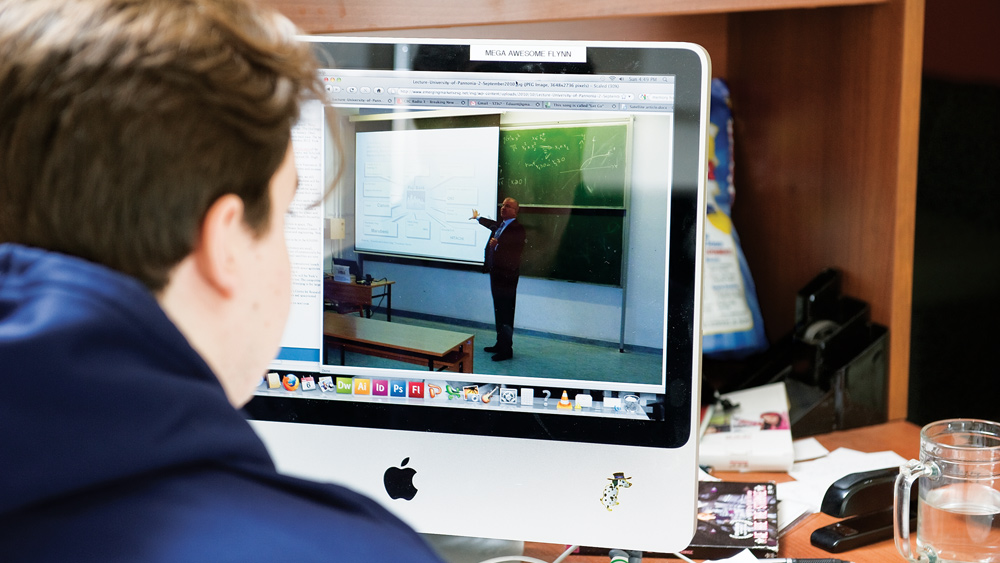Brendan Rowe
Staff Writer
Buckle up, distance education students: York is looking at taking a step into the future.
Robert Levine, a York faculty member working in natural science, is looking to use new technology to improve York’s education, especially for distance education students, through the use of real-time streaming lectures.

“Think of your first row of seats not occupied, and instead having monitors across,” said Levine. The monitors, acting as a portal for students to see the prof and vice versa, would effectively bring distance education students into the classroom.
The professor would teach the lecture normally but audio and video would be sent in real-time to remote students via the internet; an attendant monitoring bandwidth would ask questions from the online students during the streaming lecture.
“Currently distance education is principally what you would call correspondence courses,” said Levine. “The problem is that the student watching the lecture can only write down questions. The student has no way of interacting with the lecture or with the class. Real-time lectures are different.”
In 2007, Levine spoke about this technology at the TEL@York conference. TEL, which stands for technology-enhanced learning, is a field in which educators have struggled to find the best options for students.
Much debate still occurs over whether or not technology actually helps students. Levine feels strongly about the correlation between technology and better learning.
In fact, Levine teaches a course in the natural science department that discusses how technology impacts society, touching subjects such as health, economy, education and ethics.
“It’s a big advantage because it creates participation between the instructor and the internet section as much as the live section,” said Levine.
The idea also translates well to recorded lectures. “At the worst where the instructor is not getting a live section, they have small studios at what used to be called the faculty support centre […] the instructor would walk into the studio, the studio would have a monitor set up with a technician and the instructor would actually teach to internet.”
This method also allows for classes that are taken only online. Even more exciting is the possibility instructors who don’t live near York can nevertheless provide their expertise.
The real-time lectures project has been in development for several years now at the York department of learning technology services (LTS).
No working model has been developed yet – the project was sidelined while York upgraded its internet network. The internet has come a long way since then.
The project is still a work-in-progress at LTS, and talks are still ongoing about ways to implement it into York’s education system.
But one day, perhaps, York lecturers could facilitate more than just their classroom.
Streaming long-distance lectures


